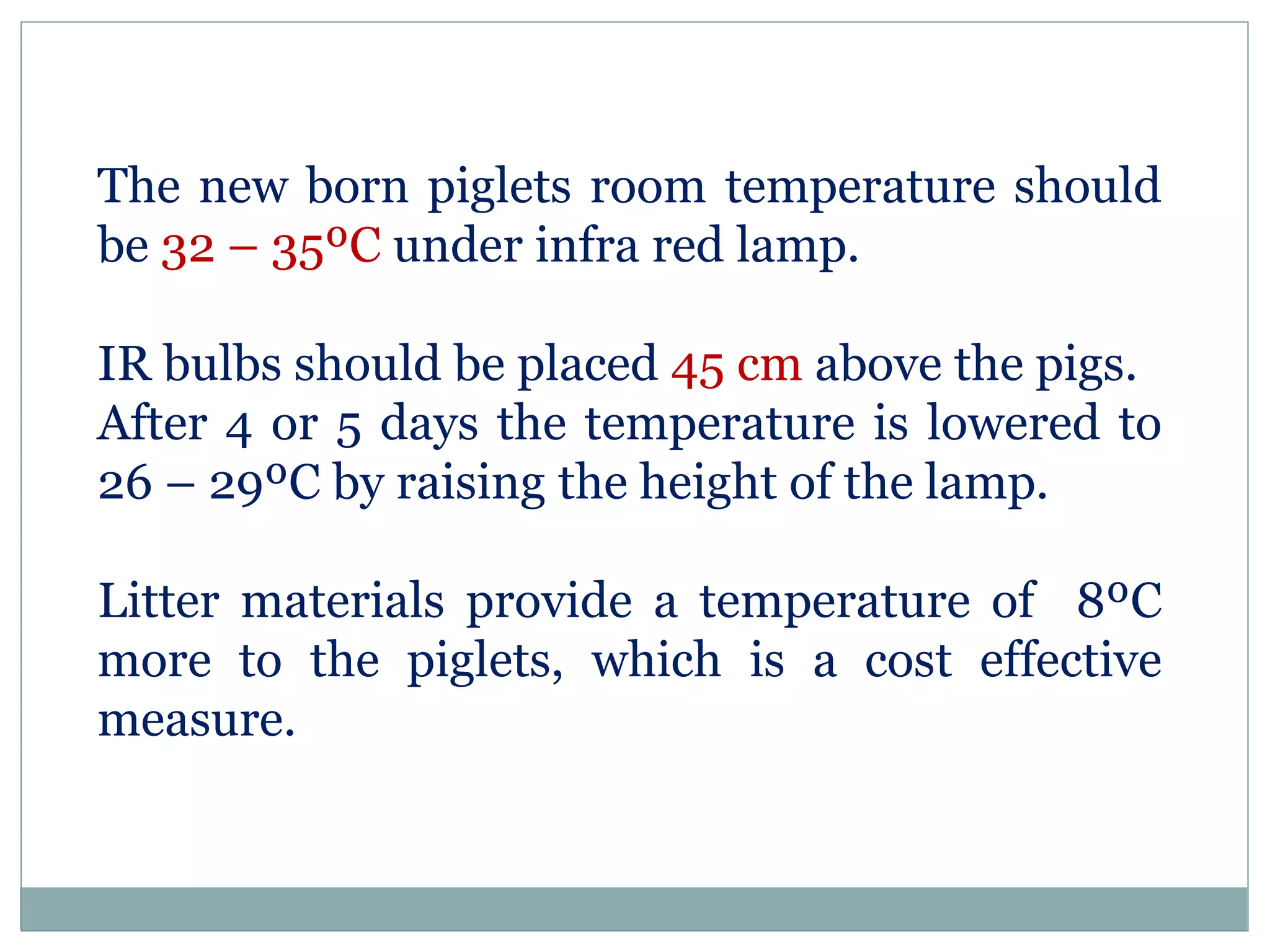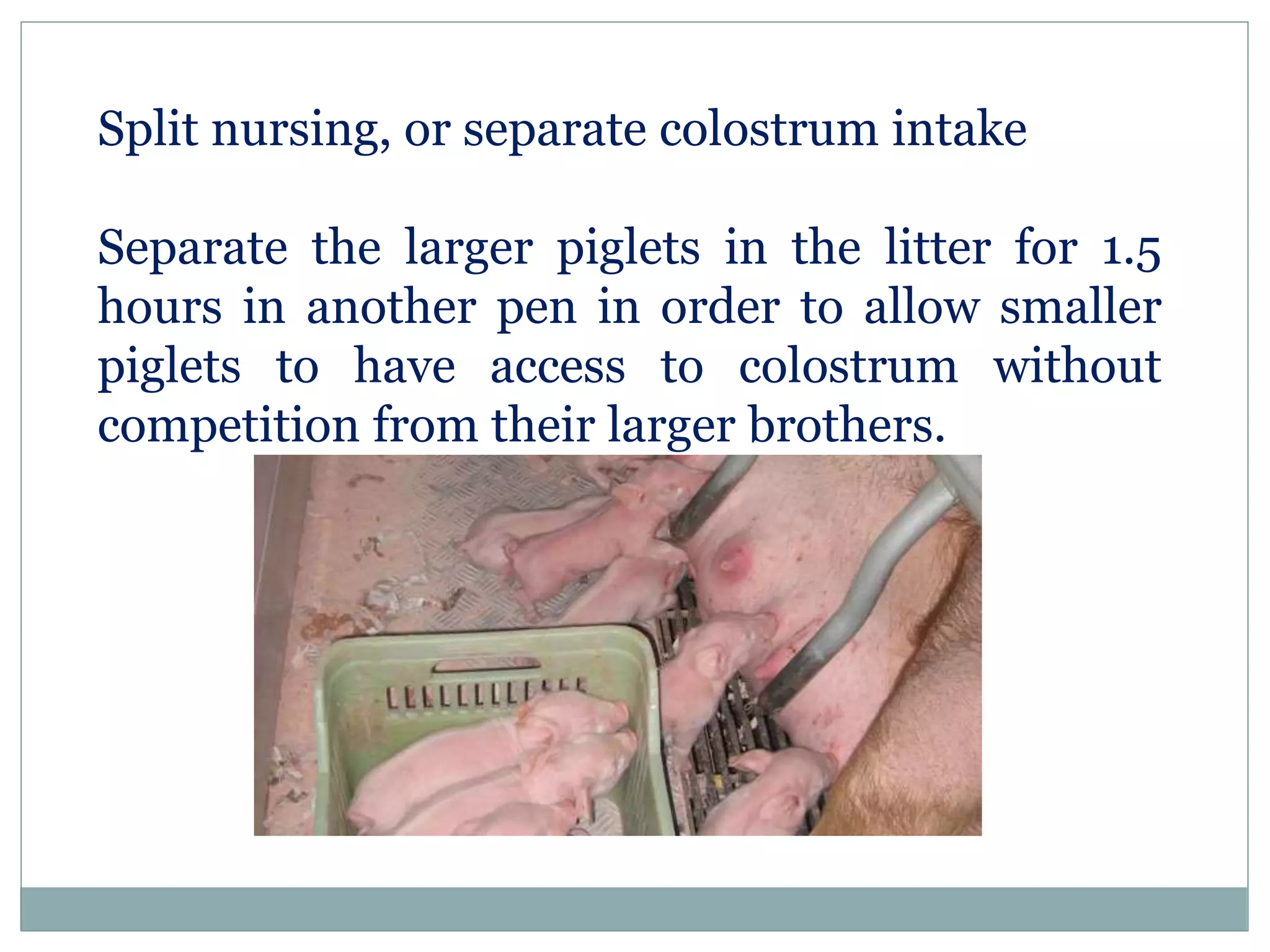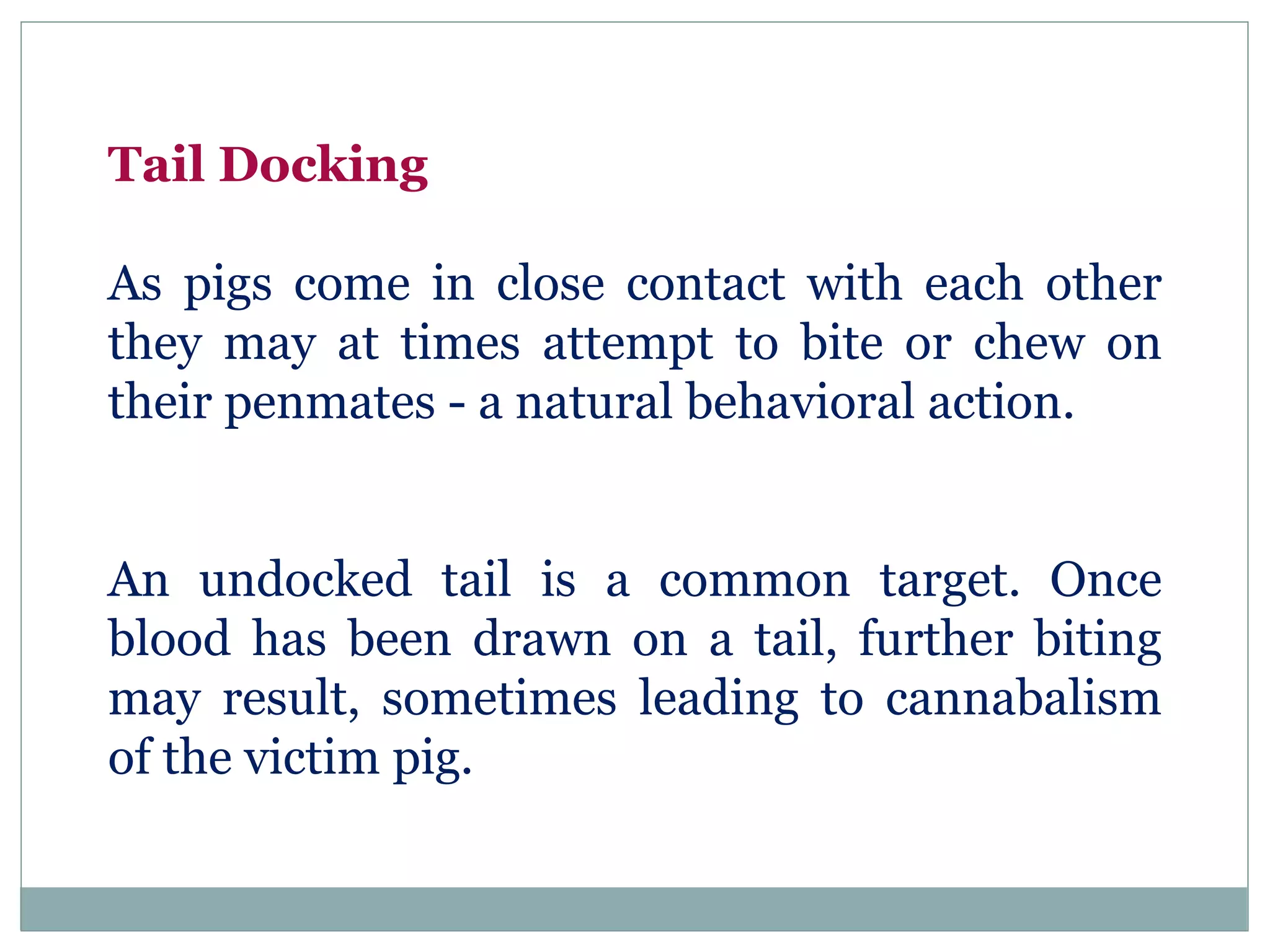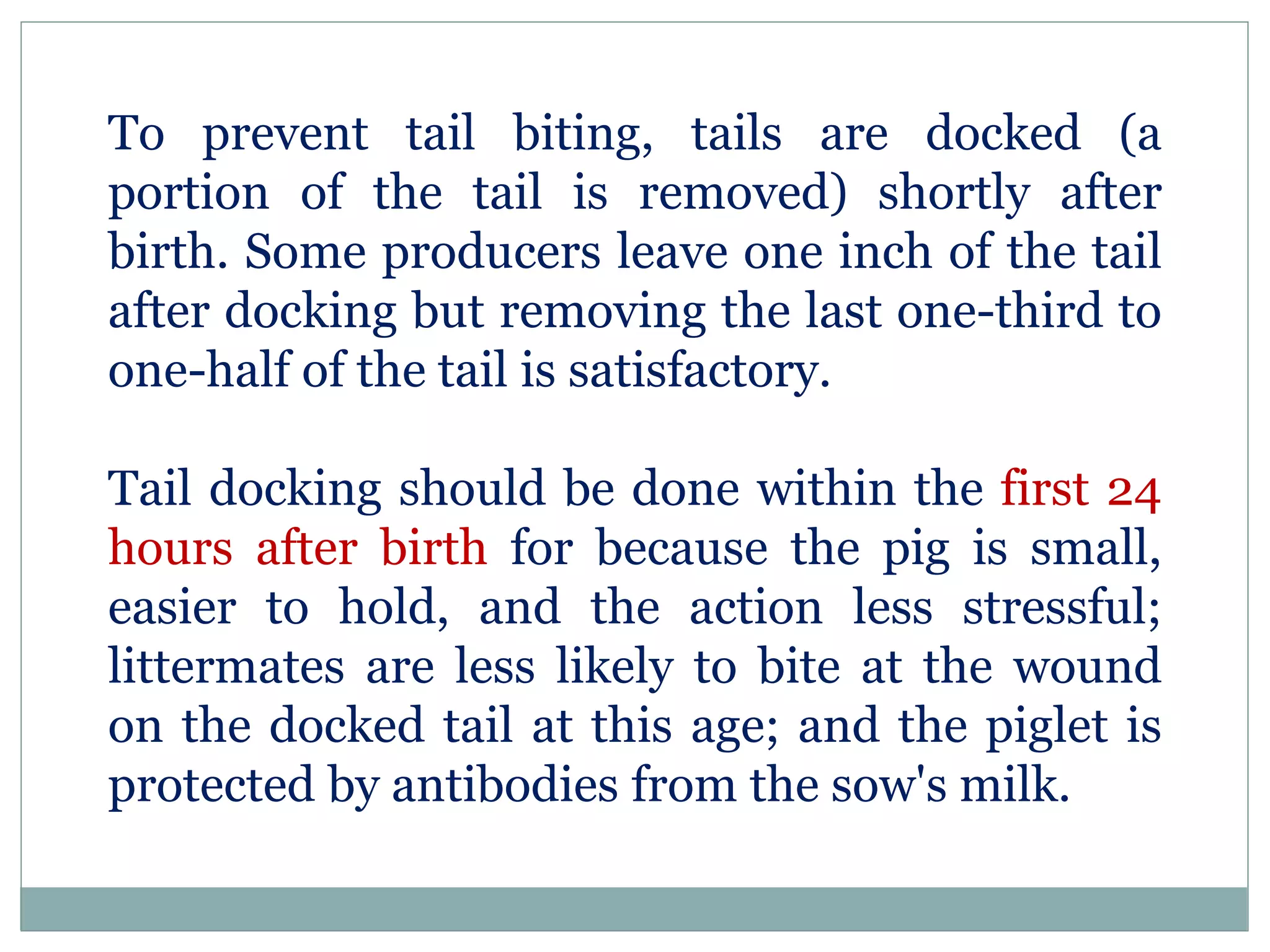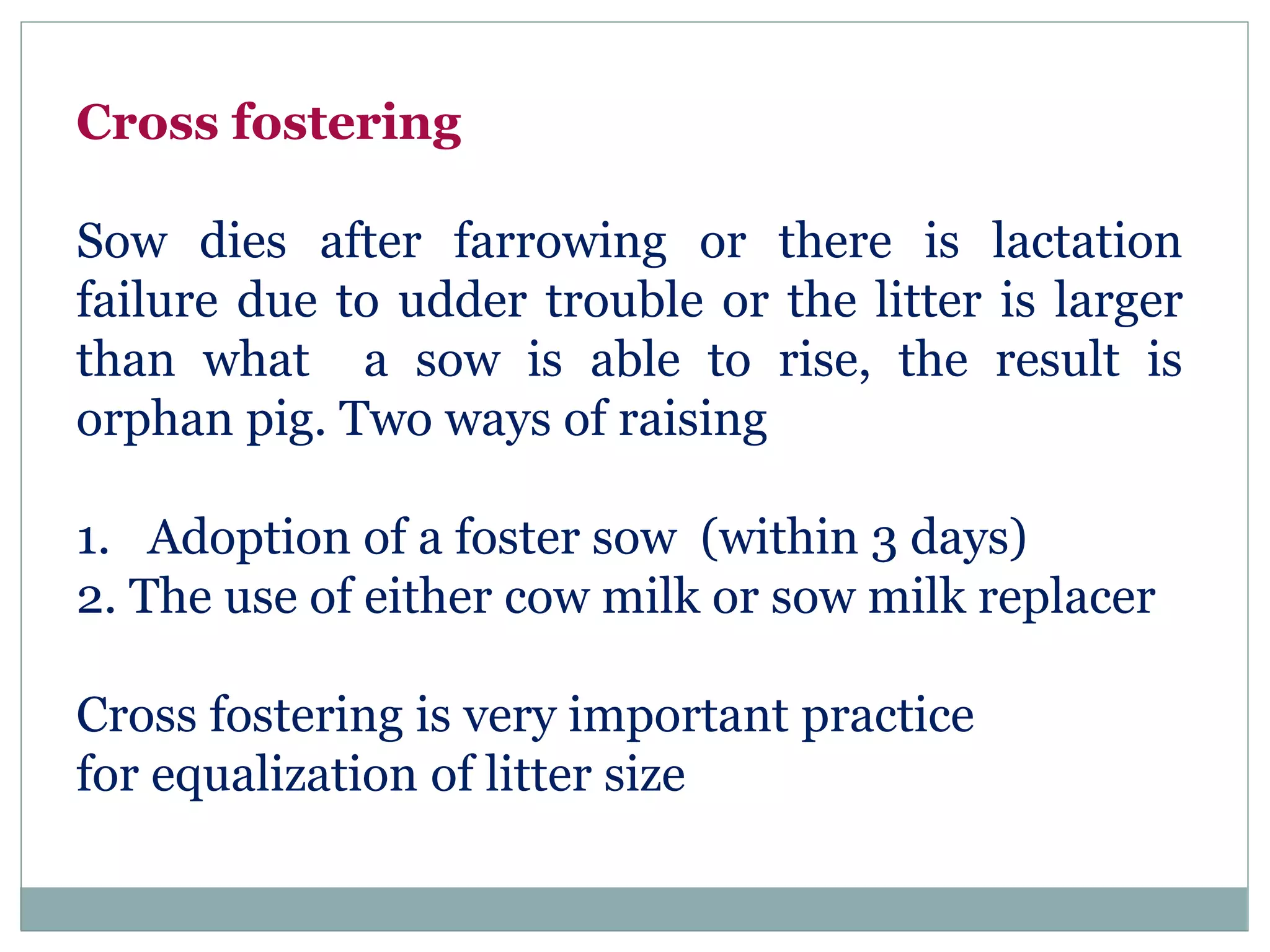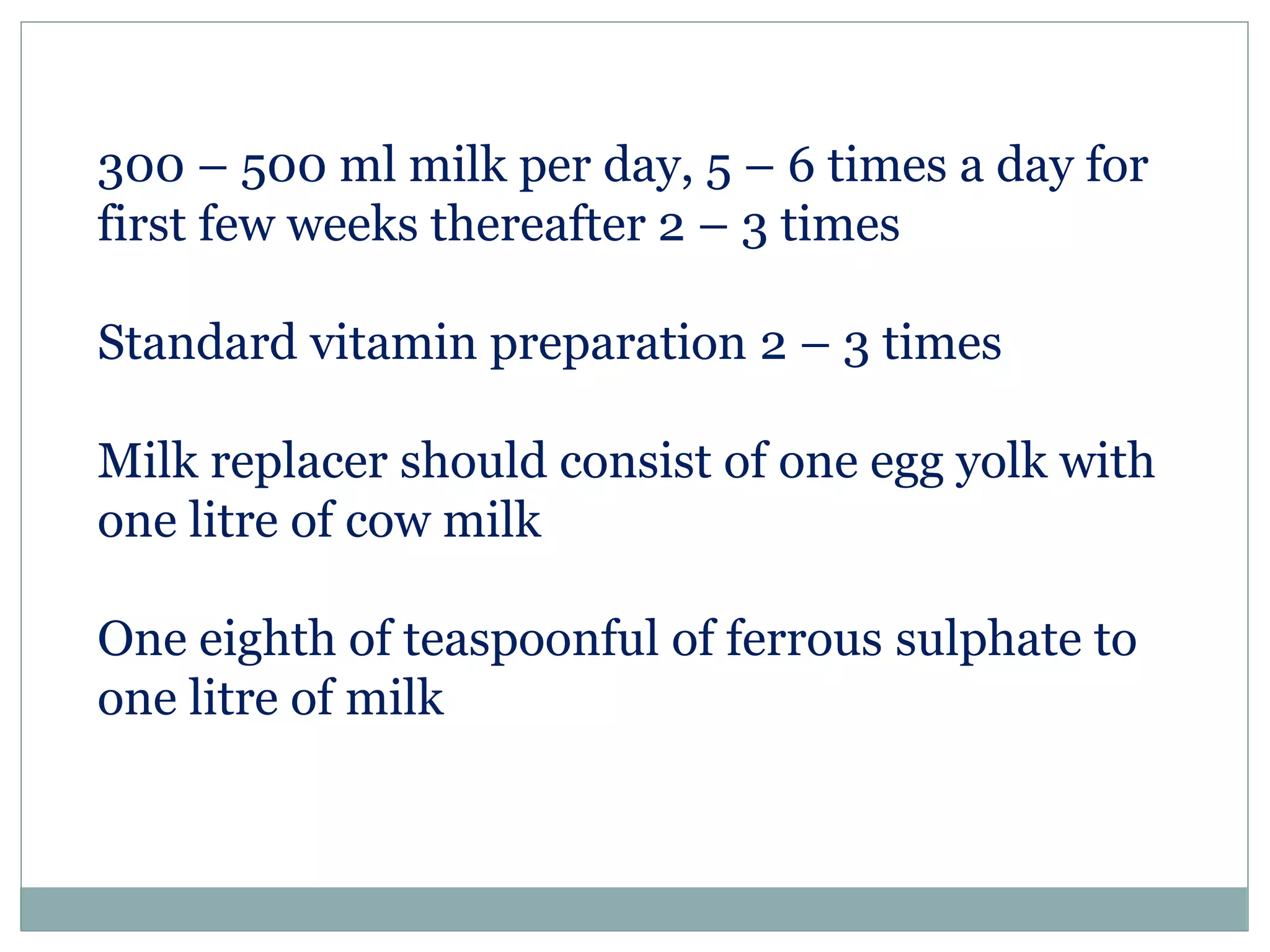The document provides guidance on caring for piglets from birth through weaning. Key points include:
- Ensuring piglets receive colostrum within the first day to acquire immunity and nutrients.
- Maintaining warm temperatures in the creep area and providing supplemental iron if needed.
- Performing procedures like tail docking, teeth clipping, and castration within the first week.
- Starting creep feeding around 2-3 weeks and monitoring for common diseases prior to weaning between 4-8 weeks of age.




